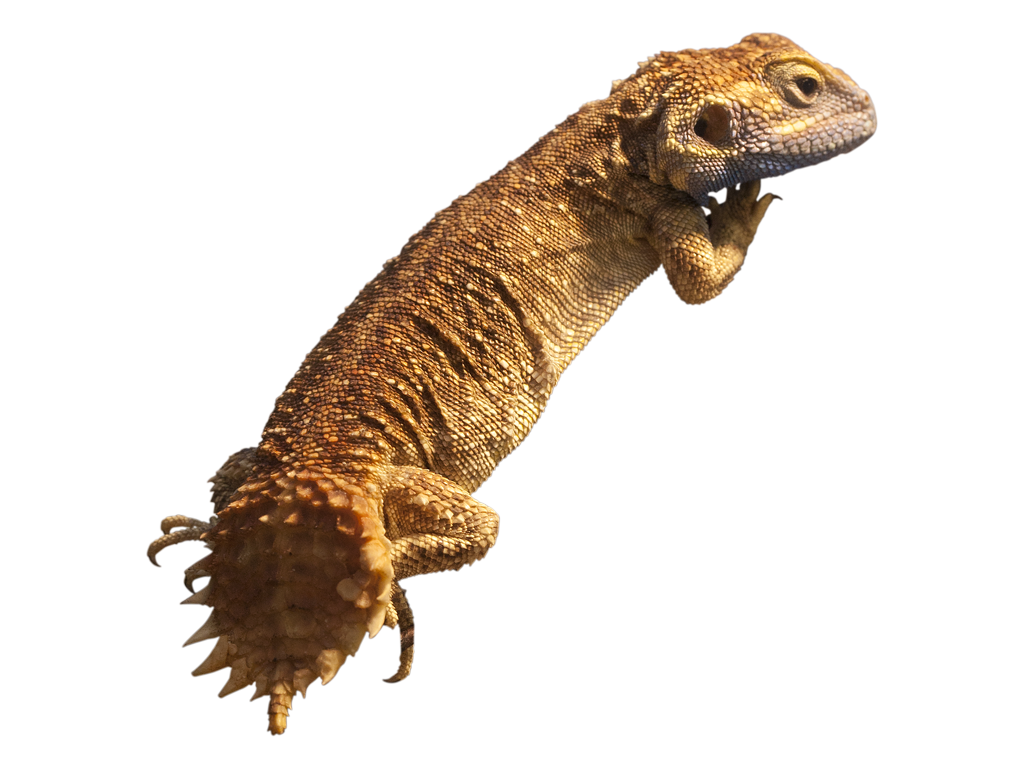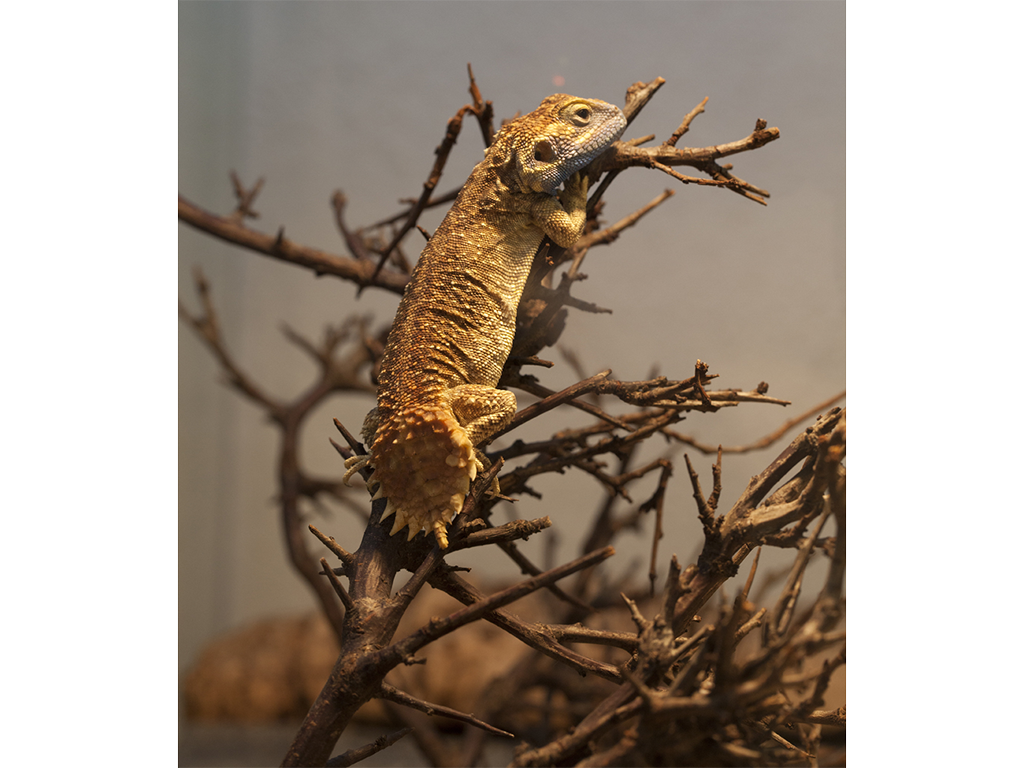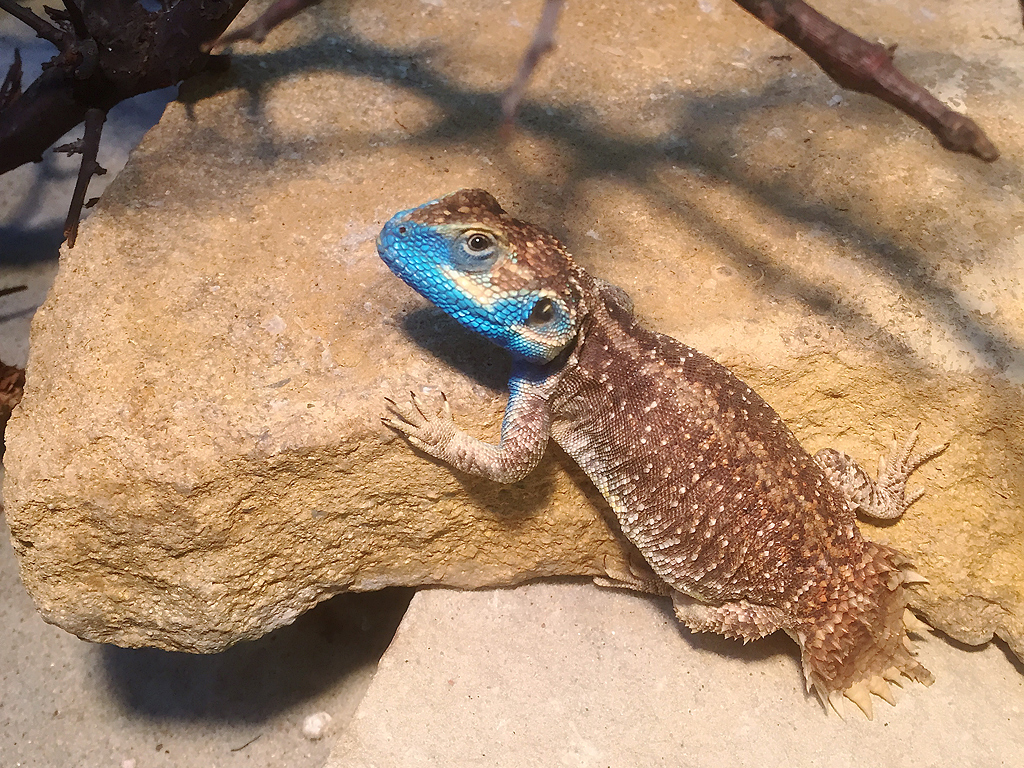Shield-tailed agama
Xenagama taylori

Blocks the entrance with its tail
The shield-tailed agama is a lizard that lives in dry, flat areas of the semi-desert and savannah. The lizard digs deep burrows in the sand. There, the shield-tailed agama protects itself from predators by using its thick, round tail to block the entrance. The lizard is exceptionally good at coping with heat and very dry conditions, but is particularly active at night.

Photo: Johanna-Rylander-Malmö-Museer.
Blue colour signals dominance
Male shield-tailed agamas get a characteristic blue colour on the chin and underside of the head during mating season. The sharp blue colour is used to demonstrate dominance over other males, and to attract females. After mating, the female lays 4–8 eggs, which she buries in the sand. The newly hatched lizards eat insects and are self-sufficient immediately after hatching.

Popularisation of pet poses a threat
The shield-tailed agama is a popular terrarium pet, as are many other small lizards. The popularity of the lizard leads to many individuals being caught in the wild and transported long distances to be sold. In the long term, this could lead to the endangerment of the shield-tailed agama. It is therefore better to buy captive-bred lizards and keep as pets.
Distribution worldwide
North-western Somalia and eastern Ethiopia.

Threat based on the Red List

Trade regulations
CITES: Not listed.